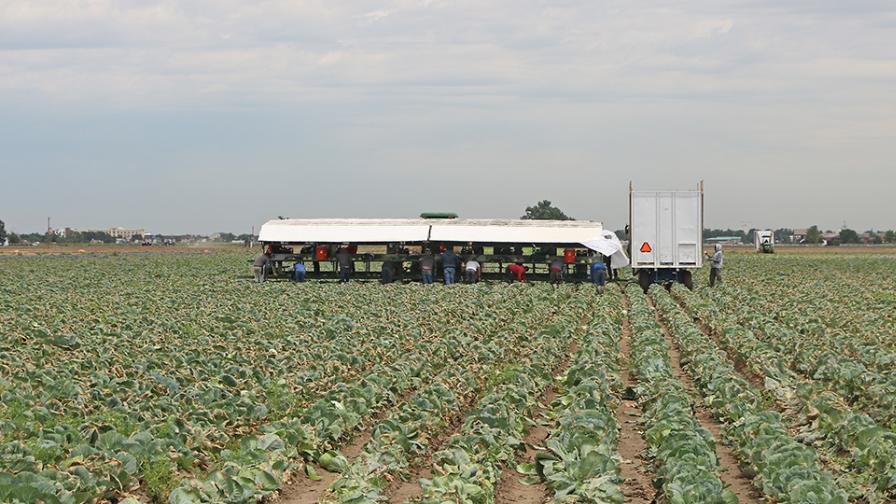How Sky High Fertilizer Prices Have Impacted Vegetable Growers
The witches brew of the pandemic, Russia (the world’s biggest fertilizer exporter) invading Ukraine, natural gas prices, and interest rates sent fertilizer prices skyrocketing a couple years ago. It had an uneven impact on vegetable growers across the country.
“[Growers] looked for ways to reduce the amount applied,” says Gina Colfer, Sustainable Solutions Manager with Wilbur-Ellis. “Which means trying new products, technologies, timing, and methodologies.”
Colfer works with several growers on California’s Central Coast, the heart of cool crop growing and high-intensity production with up to four crops in a field per year.
Joe Petrocco, Vice President of Petrocco Farms in Brighton, CO, responded to the increased prices by stopping preplant fertilizer and cutting back on nitrate applications in established crops, even with variable-rate applicators.
Hidden Hills Farms of Kansas’ RJ Dake went one further and ceased all chemical fertilizers.
“[We] utilized some cover crops for nutrient scavenging,” Dake says.
Other growers saw an increase but didn’t change their usual practices.
“If you get a good yield, you are making money,” says T.J. Waldock, President of High Stakes Farm in Bloomdale, OH.
In fact, Waldock says farmers can get in trouble if they cut fertilizers.
“We always make an input list to see to see if a crop is viable or not. I think fertilizer went up $75 an acre that year. If that deters you from changing what practices make you successful, then you should find a different crop or consider renting your land.”
In fact, Waldock says he, his brother, and father are trialing increasing the amount of fertilizer on a couple fields to see how it impacts yield and therefore income.
Organic growers didn’t change what they use. But with so many conventional growers looking for alternative options, even their fertilizer prices increased. Take Annette Renquist, who owns Renquist Organic Farms in Valley Center, CA, who uses only manure on her field.
“We normally pay $225 per acre. [It increased] to $350 per acre, and it has not declined,” Renquist says.
She’s looking for a new source with better pricing.

Petrocco Farms reduced its nitrate use and saw a decrease in yield. Its regenerative fields, however, hold promise keeping yields up with conservation practices.
Photo by Carol Miller
Looking Forward
These higher prices forced an industrywide experiment of sorts. So many growers experimented with new ways to handle plant nutrition, they’ve found better methods they’ll stick with even as prices come down.
Colfer’s growers had the added pressure of new regulations, so her part of the country may have seen the most changes in fertilizer use.
Some of the methods and products adopted included more “nutrient use efficient fertilizers,” slower release, urea-rich fertilizers, nitrogen-inhibiting technologies, potassium acetates, humic acids, and microbial products (to help unlock tied nutrients due to high pH or salts), she says.
Using these products, Colfer says, led to changes in irrigation methods.
“Spoon feeding nutrients with more frequent applications is the key to success,” she says. “You do not want the crop to dry out too much or run out of nitrogen or any other nutrient because the crop will always take some kind of hit from these stressors and it is hard to play catch up.”
Luke Johnson, an agronomist with Walther Farms in Brinson, GA, concurs.
“We didn’t change our fertilizer types or amounts. We apply nitrogen through fertigation, which is the most efficient way to apply nitrogen.”
Hidden Hills Farms will likely add back some fertilizers, but since yield didn’t suffer significantly, applications will not return to previous levels, Dake says.
Petrocco saw some negative impacts from the changes he made, with lower yields for most of the crops. But he plans to continue cutting back on nitrates and turning to regenerative production practices to get his yield back up.
“I already have a small regenerative crop venture,” he says. “For me, it is not only a more efficient and cleaner way to produce, but also it what the future generations seek.”









